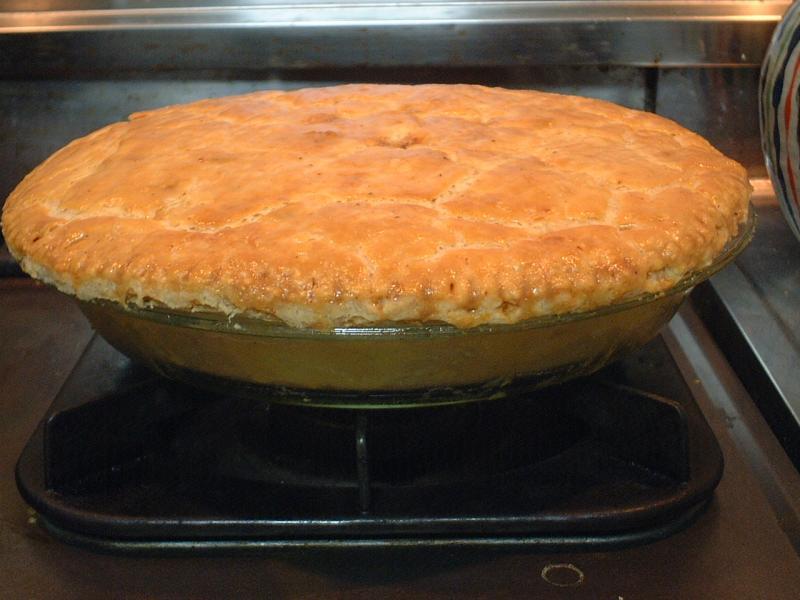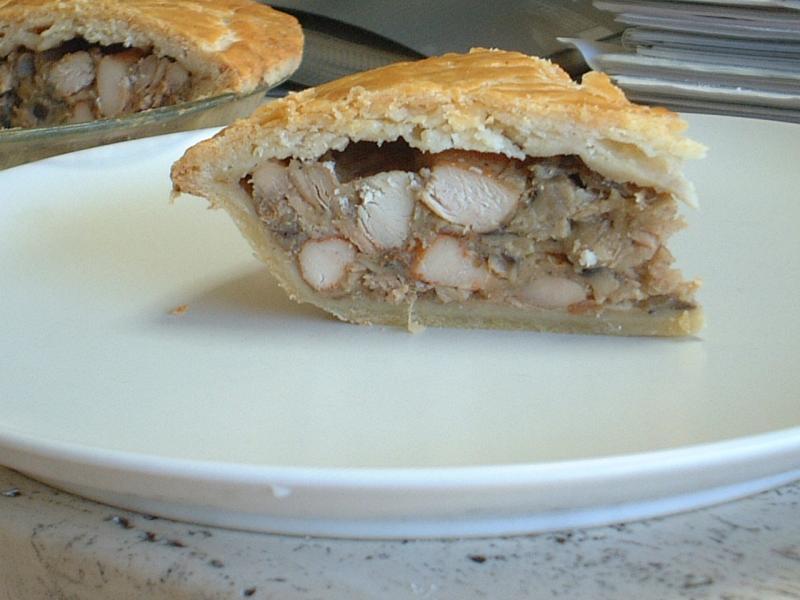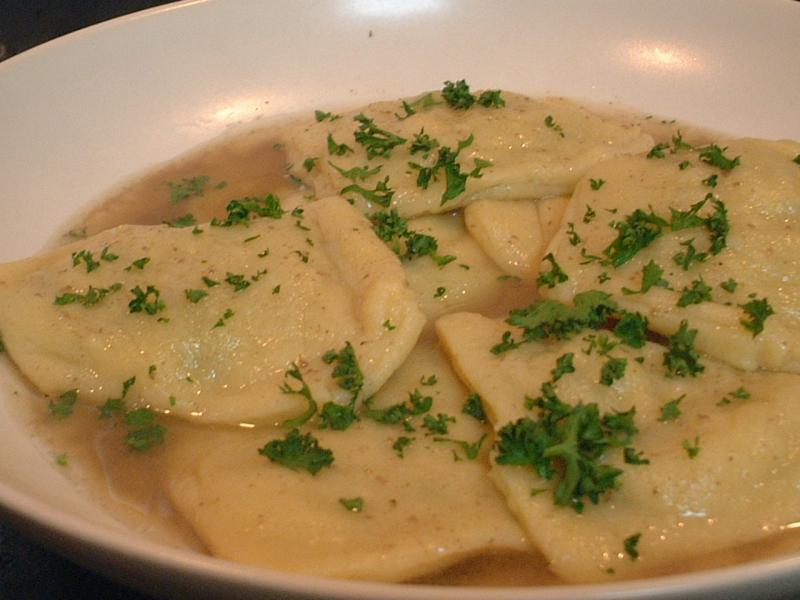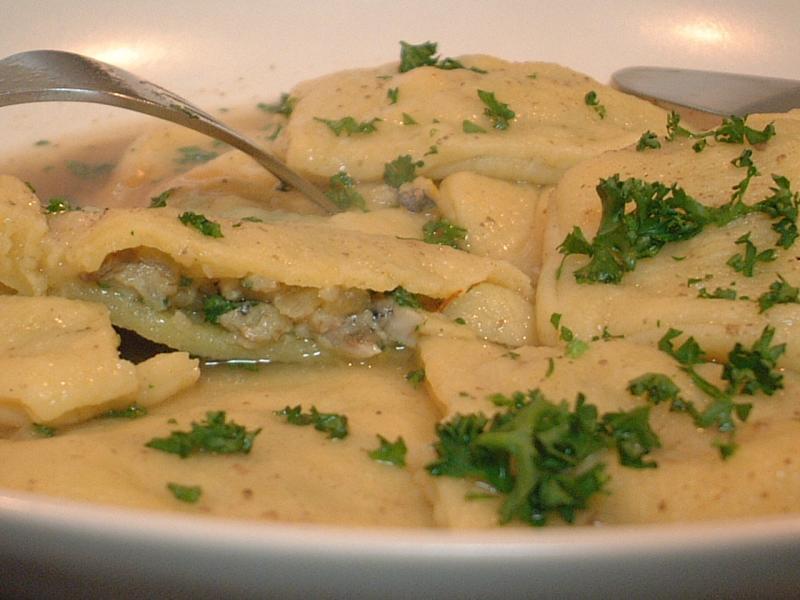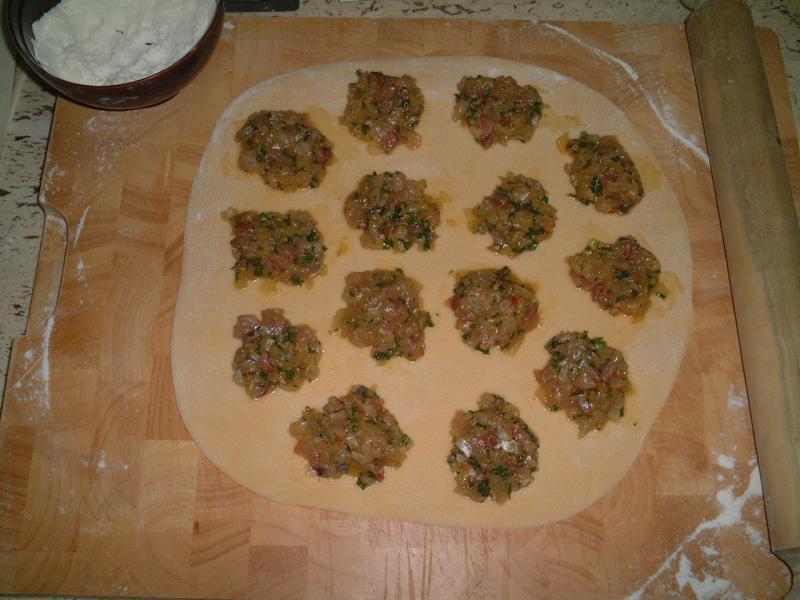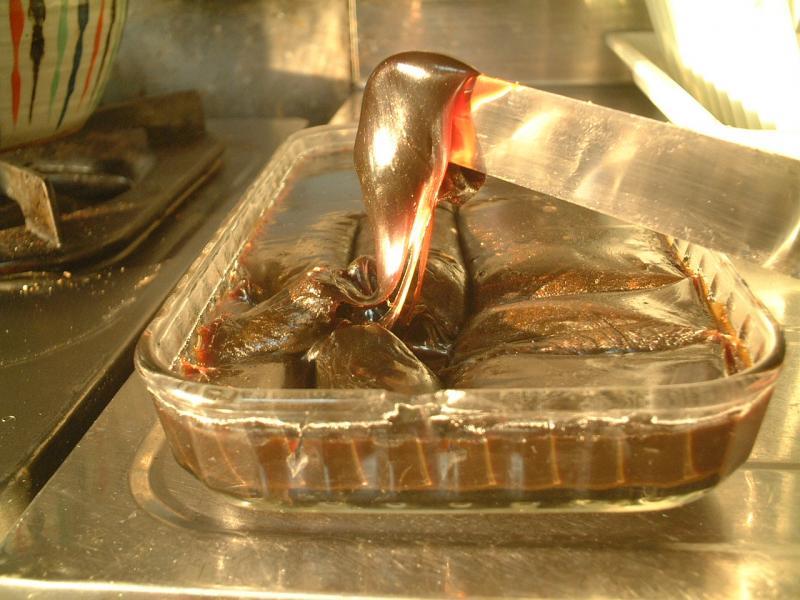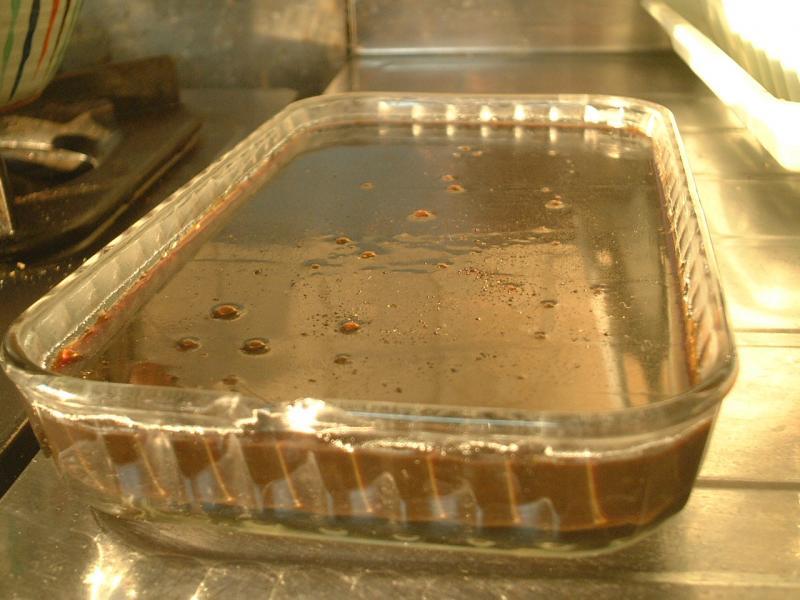-
Posts
1,728 -
Joined
-
Last visited
Content Type
Profiles
Forums
Store
Help Articles
Everything posted by Blether
-

Real Authentic Thai Food in Phuket? Where?
Blether replied to a topic in Elsewhere in Asia/Pacific: Dining
OK - my best suggestion is Palai Seafood on Chalong Bay (15 minutes' ride from Kata/Karon). A Thai friend took me there a year ago. As far as Phuket is concerned, if it's regional it's likely to be seafood: Palai has great seafood and a lovely view - as this review says, the decor is functional. I'd have no qualms about taking kids there. In the Patong/Karon/Kata area, even many of the western tourist restaurants have a good range of Thai food on the menu, particularly Isaan dishes. Of course there's a significant seasonal Isaan population there, and the chefs everywhere are Thais. You might be surprised at what's available. Sorry, I can't speak for Thai food at the North end of the island. -

Real Authentic Thai Food in Phuket? Where?
Blether replied to a topic in Elsewhere in Asia/Pacific: Dining
Hi, Rick. Where will you stay in Phuket, and where will you be visiting ? It's a big place to be schlepping around by tuk-tuk with a 9-month old - from your post, I think you recognise that. What are your criteria for 'authentic' - how well do you know Thai food ? How about your budget (foreign money goes a long way in Thailand, of course) and preference for high-end, mid-range or motorbike-and-sidecar street vendor ? I've made a dozen trips of more than a week to Phuket over the years, and I don't think you'll have any trouble finding authentic Thai food. I don't think that narrows down your options much. -
This does sound like a fun project Boeuf Bourgignon - you don't have any fat pig meat in it. On a budget, you might even consider 4 pig trotters cooked in the stock beforehand, to give the sauce more body. You could mix in up to 50% of bottom round to bring the cost down - IMO the strong-flavoured meat works with the strong-wine-flavoured base, certainly if it's less than half. I think the idea of a stew is a good one. Mind you, looking at your spreadsheet I see your main course for the beef eaters is 2.16 a head; the ravioli is only 1.13. Could you do 'coq au vin' - one whole chicken leg each (some diners will prefer breast), say - more cheaply ? To me, 2.50/lb isn't cheap meat, anyway. I'd be looking at pork or chicken, for sure, but I'm not even in the USA. I agree that the lack of starch in the beef menu stands out. There are plenty of starchy desserts you could provide to redress the balance. Your menu doesn't seem to use the ovens - a couple of pieces of roasted potato might also go down nicely, if you could find space in the budget - (even simple boiled spuds fit with the stew). Good luck, and do let us know how it works out.
-
It looks to be nicely cooked, though. I use paprika for color (2-3T for a 2.5lb chicken) - it gives a nice brick red; real cochineal is no problem but some of the yellows fail the 'natural' or safety test too badly, for me.
-
I think David's right about stew, but the same caveat goes: it needs fat from something. I guess your last option is to make stock / consomme with it - for soup, or to enhance your more expensive cuts when you wet cook them, or in sauces.
-
A lot of old recipes for beef braises call for adding chopped fat pork, ham or bacon. You have to think that that's at least partly aimed at this kind of cut. My other suggestion is, again combining with fat pork, to use it in sausage or meatballs.
-
When I was growing up we'd have sardines on toast for supper (pre-bedtime snack) from time to time - and occasionally as an easy lunch, to go with some soup. Those tinned sardines are plenty oily, and crushed on to bread all they need is some seasoning to make a good dish. The tuna that comes in cans is far leaner. When i was 13 or 14 or so, I wondered what could be done with it, and casting about, came up with a mixture of canned tuna, mayo, a splash of white wine vinegar, some garlic salt and a bit of mustard, salt, pepper and a splash of oil from the can, all mashed together. Great on toast or in sandwiches. I used that a lot in my teens, before ever coming across the common use of a tuna-mayo mixture in sandwiches elsewhere, I think first when I moved away from home to the city, as a student. So, in my experience, I 'invented' tuna salad. Not that I ever made a noise about it: I never supposed that the tuna salad I found in town derived from my solo pottering about in a kitchen in the sticks. Makes a nice memory, somehow, but that's all. Chicken Salad ? As cultural/anthropological phenomena, these kinds of things that are so simple, tend to emerge and evolve over time, organically, being 'discovered' or improvised in many different places and taken up by word-of-mouth (or taste-of-mouth !). "Chicken salad was invented by Martha Shuggs on Tuesday 17th Julember, 19canteen" - is that the fault of misplaced absolutism, in the 'there must be an eternal truth for everything' mould, or misplaced relativism of the form 'as far as I know it, this is true, so that's the truth' ?
-
"True truth" starts to sound like scepticism But if truth is beauty and beauty truth, and that is all you, me and the urn know or need to know; and yet beauty is in the eye of the beholder, where does that leave truth ? I have my doubts about absolute truth; a neat convention within certain thought disciplines, sure, but isn't absolutism what the Enlightenment saved us from ? As for Wikipedia (and many other sources besides, cookbooks, particularly, included) I find it's not usually that hard to recognise the nonsense history apart from credible history. Applying the 'how would we know that ?' test does most of the work, doesn't it ? Sorry, Chris, no stories of bad food history on the net - I had fun with some of the old cookbooks at Google Books recently - food history in its original written form. I'll take some trash-wading if I get to find gems like that
-
Do you like samosas or pakora ? Both use dairy-free, oil-based doughs, don't need bread-like proving time and are eminently portable. Pakora can carry pretty much any vegetable you fancy, and you can stuff samosa with whatever cooked meat, potato or other filling - you could even create a new line in "not Indian flavored" if that's not your thing.
-
Low iodine sounds like a tough regime. I second the soup idea - how about chicken stock made into whatever soup takes your fancy, and a vacuum flask to take it with you ? From the stock you can lift off chicken fat for cooking skinless potatoes.
-
Thanks, robirdstx. I'm enjoying seeing your own dinners - your gratin soup looked particularly good. Here, cold chicken pie (shown hot, first): - consisting of three whole chicken legs, pre-salted and browned in a generous amount of butter, then peppered & finished in the oven to 'falling off the bone' point, torn into pieces by hand once cold; a pound of breast fillets, salted, peppered & paprika'ed overnight, cut in 1" pieces then gently sauteed and de-glazed with a little white wine; an onion and a pound-and-a-half of sliced mushrooms, cooked down in some of the fat/butter from the chicken legs; thick veloute from 2 quarts of good-flavoured chicken stock and a glass of wine, boiled down to one quart, a bay leaf, and a roux using the rest of the fat/butter from the roast; and the gravy jelly from the legs. Filling combined and left to cool somewhat. The pie crust is hot water pastry made with about 2/3 chicken fat lifted from the stock, 1/3 butter. I've decided I like hot water crust for the shell of a wet-filled pie like this: it's robust and nicely crisp, and (no food processor here) easy to prepare. The lid is shortcrust made with chicken fat from the stock, again made up with fresh butter. Shortcrust trimmings and spare filling gave a nice chicken turnover that baked more quickly, for yesterday night:
-
Hi, Scott123. I make wholewheat bread all the time & I love it. In the past ten years I once threw out the remains of a 5kg bag because it had gone off before I used it up. I threw out the loaf I'd baked, too. You're right that bread from rancid ww flour tastes terrible. Is the ww flour supply really so bad where you are ? Oatmeal of course, being another whole grain product, goes off in just the same way that wholewheat does, doesn't it ?
-

Workable, Real-World Solutions to Wet Ice in Warm Bins
Blether replied to a topic in Spirits & Cocktails
I question that. Just because the thermometer reads 0C, doesn't mean the internal temperature of each ice cube is 0C (if it was, all the ice would very quickly turn to water in an ordinary room). The drink gets to -5C because the ice is colder than that. Enthalpy schmenthalpy. -
Ravioli in brodo Homemade egg pasta; sardine & saffron stuffing, using the knife-minced flesh of two aji (small jacks - about the same as pilchards). To ~6oz of fish meat for two, half a stewed medium onion (left over from making Marcella Hazan's tomato, butter & onion sauce), 3tbsp parsley, 1/4 clove garlic, very small pinch cayenne, salt & pepper. Broth made with the fish carcasses and a bay leaf, half a dozen peppercorns, water and 1/4 glass of wine. A pinch of saffron threads steeped in ~3tbsp of this for 15 minutes, and this mixed into the fish stuffing. The rest of the broth seasoned to serve. The saffron worked really well with the blue fish.
-
A month or so ago, I trimmed the fat from a piece of fillet steak (the biggest part was between the muscles) and rendered it for fat as a base for frying onions and making a sauce to put in a pastry case with it. That gave the sauce a distinct, rich beef-fat flavour (and meant tasty cracklings for me) that I thought was pretty good. A couple of weeks ago I rendered the fat cap and between-muscle fat from a couple of big pieces of chuck (shoulder clod) for stew, for fat to brown the meat and onions. I put the cracklings back in to the stew with the meat - lots of browning on them, as you say, and the smaller pieces dissolved completely giving body to the stew. I'd left the bigger pieces of fat (like 3" square) as they were - they gave their browning and some body to the stew, but I had to fish out the goo-ey chunks that they left. In future I'd cut all the fat down to the same 1/2" or 3/4" pieces. Shoulder clod is very lean - I'd definitely do the same again. I'm pleased with the approach, overall - I've got the benefit of fat that otherwise would've been set aside on the plate and thrown away. If you like soft lumps of fat in your stew, it wouldn't make sense.
-

Workable, Real-World Solutions to Wet Ice in Warm Bins
Blether replied to a topic in Spirits & Cocktails
Why not keep your bucket of ice inside a larger bucket, and fill the gap with one of: salted ice, replenished as needed dry ice freezer packs (the blue-gel jobs) ? -
Unhappily for you, I was reading Marguerite Patten's Best British Dishes last night - she gives as variations on cream of watercress soup: Cheese and watercress soup Egg and watercress soup Ham and watercress soup Seafood and watercress soup Egg, like egg with mustard & cress ? Your mission, should you choose to accept it: make a watercress soup that'll firm when chilled (so, good stock, of course), set a chawanmushi seafood custard on top of it, then heat through to serve (or chill, and turn the heating up). Or equally, a chicken-stock chawanmushi if you base the soup on chicken stock, and call it 'oyako (parent & child) soup'.
-
That's a good question, and I'll give a simple amswer: those suckers are hard. I think it would mean using a sturdy bag and beating them with a rolling pin, at least. Easier to let the gas do most of the work.
-
Hi, Kerry. You may just have saved me from the trial at 118C. I'm hoping for firm but chewy - not as hard as Walker's toffee; about the same as a 'penny chew' What kind of toffee will I get at 121C ?
-
It's been a while It says でん粉 - so corn syrup, I think. It is thin compared to brand mizuame - it's even thinner than Lyle's Golden Syrup. Which is fine by me, it makes it easy to measure. Of course it makes weight-by-weight price comparison difficult, but it was about JPY300 for the 600g jar. I'm shooting for less mizuame next time (I'll try half, i.e. 2oz to the half kilo of kurozato). It was just too ungodly glossy, and the flavour beginning to be noticeably thinner.
-
Natsumikan is a large, thick-skinned orange citrus fruit with a sour, bitter flavour. It ripens around March in Tokyo - there's a tree in the grounds of this apartment building from which I'm allowed to take as many as I have the time to cut up. To my mind, it's every bit a match for Seville oranges (and the marmalade's tawny because I use brown sugar).
-
I tried again. This time I added 4oz of Hanamasa's mizuame, and 200ml of water. I started with 100ml of water, and added the rest when the mixture reached a boil whilst there were still a number of rocks of sugar undissolved. Even using the lowest gas possible from the very start, and adding the extra water, I still had one last little rock of sugar that I had to break up with a wooden spoon to get everything in solution. It then boiled at around 105.5C, and I boiled it up to 115C (soft ball): It's a proper toffee this time, but too soft. I can mark it and take out lumps as above, but an hour later it's flowed back to:
-
The knife is known as a 鉄刺包丁 'tessa bouchou' or 河豚引き 'fuguhiki'. Tessa as in 'bullet sashimi' - "like shot from the old muskets, fugu doesn't 'hit' you very often but can be deadly when it does". The sashimi doesn't have much flavour. The soup with a little twist of deep-fried skin is good. It's the frisson of danger that counts, isn't it ?
-
prasantrin is right about salmon being common in Japan. Hot smoked salmon has a traditional history, but cold-smoked is an import from the West. A takobiki is a little thinner than a yanagiba, but they are both general sashimi/sushi knives, the former being originally the Kantou version, the latter the Kansai one. I understand that the Kansai yanagiba has in recent times become the standard across the country. Budrichard - the long, sword-like knife for tuna is usually known as maguro-bouchou or maguro-kiri bouchou. Fugu of course isn't oily like salmon (and farmed salmon is far oilier than wild), but is probably the acme of thin-slicing fish in the Japanese tradition - here 削ぎ切り 'sogi-giri'.


